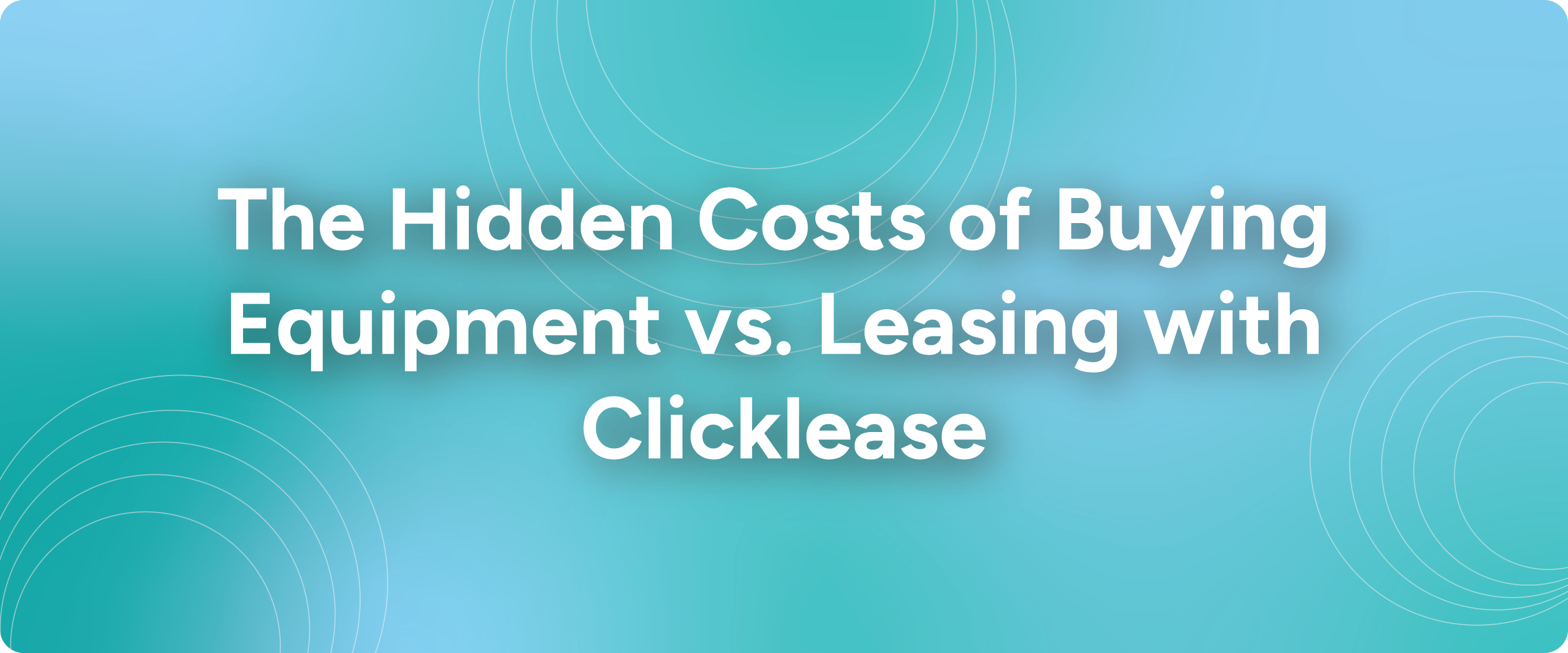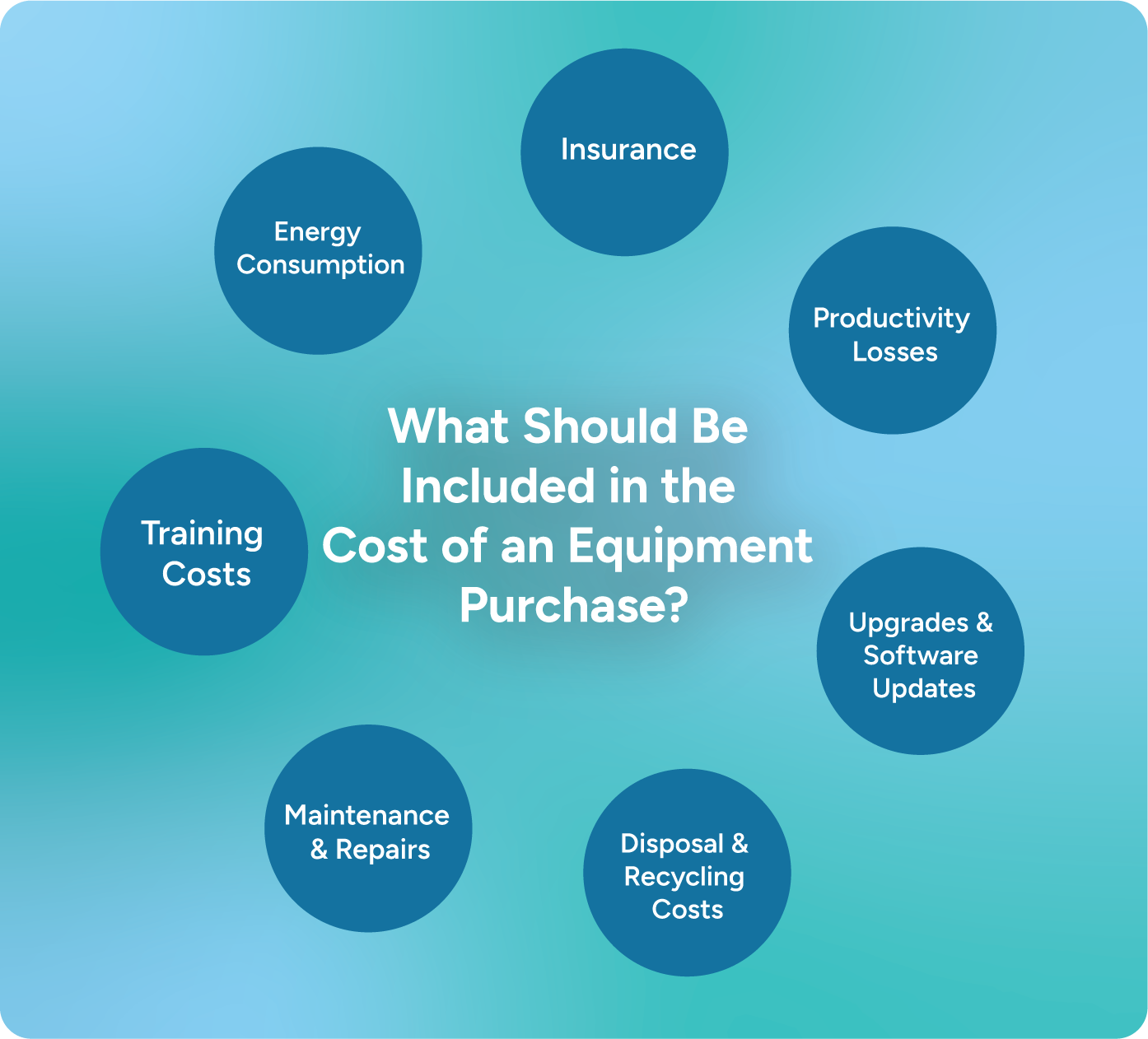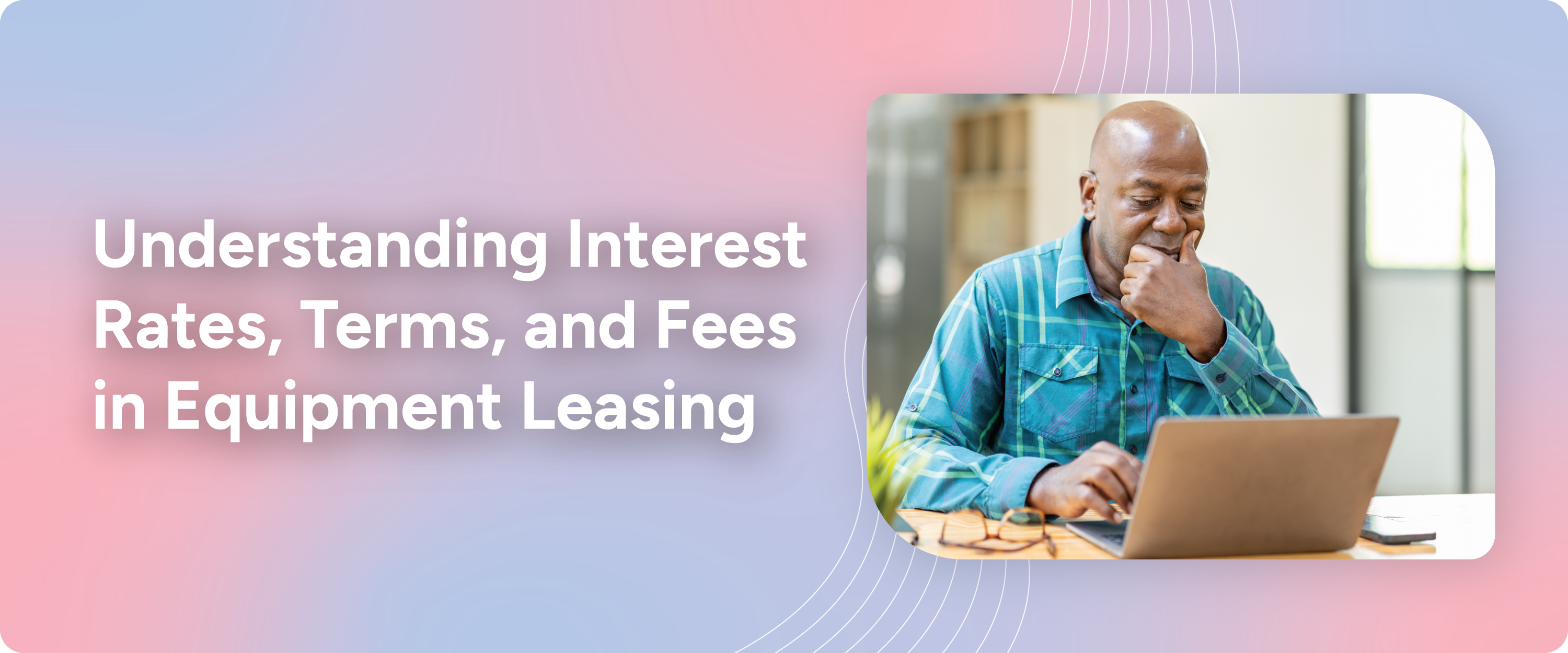The Hidden Costs of Leasing vs Buying Equipment with Clicklease

When it comes to growing your business, one of the biggest decisions is whether to lease or buy equipment. On the surface, purchasing may seem like the smarter long-term investment, but the true cost of ownership often goes far beyond the sticker price.
The reality is that buying business equipment comes with hidden costs that many companies don’t calculate upfront. Leasing, on the other hand, can be a simple way to get the equipment you need now without unexpected financial burdens.
What Should Be Included in the Cost of an Equipment Purchase?

The purchase price is only the beginning. When you buy equipment, you should also factor in:
- Maintenance & Repairs – Even new machines eventually break down. Repairs and preventative maintenance can add up quickly.
- Upgrades & Software Updates – Technology evolves fast. Software, hardware, and digital controls require updates to stay competitive.
- Energy Consumption – Older machines often consume more energy, raising utility costs.
- Disposal & Recycling Costs – At the end of life, equipment must be removed, recycled, or disposed of.
- Productivity Losses – Breakdowns and downtime can mean lost revenue while waiting on repairs.
- Training Costs – New equipment usually requires training, certifications, or onboarding for employees.
- Insurance – Ownership often means higher insurance premiums.
When you add these expenses together, the total cost of buying equipment for business is often far higher than expected.
What Is a Hidden Cost in Business Equipment?
A hidden cost is any expense beyond the purchase price that impacts profitability. Many businesses only budget for the upfront cost of equipment, but it’s the ongoing and unpredictable costs, like maintenance, upgrades, and lost productivity, that reduce ROI.
For example:
- That CNC machine you purchased may need costly spindle replacements every few years.
- A point-of-sale system might require software upgrades that are just as expensive as the hardware itself.
These are all hidden costs that can drain resources and make ownership less attractive.
Leasing vs. Buying Equipment
So, is leasing better than buying? In many cases, yes. Leasing can provide a smarter path for growth, especially for small and medium businesses.
Benefits of Leasing vs Buying Equipment with Clicklease:
- Simple Monthly Payments – Keep cash flow steady without tying up capital.
- Upgrades Made Easy – Stay competitive by upgrading when new technology becomes available.
- Fast Decisions – Get the equipment you need without waiting weeks for answers.
- No Hidden Disposal Costs – Return or upgrade equipment without worrying about storage or recycling.
- Lower Risk – Avoid getting stuck with outdated or unreliable machines.
Leasing shifts the risk away from your business and makes it simple to scale as you grow.

Equipment Types Ideal for Leasing Over Buying
Some types of equipment are especially well-suited for leasing because of their high upfront costs, frequent upgrades, or expensive maintenance needs. Examples include:
- CNC Machines
- Commercial Vehicles
- Medical & Dental Equipment
- IT Hardware & Software System
- Point-of-Sale Systems & Kiosks
- Manufacturing & Packaging Equipment
For these categories, leasing is often better than buying because it minimizes hidden costs and keeps your business agile.
The Bottom Line
Buying equipment for business ties up cash and exposes you to ongoing hidden costs. Leasing through Clicklease makes growth simple: fast decisions, predictable payments, and the ability to adapt as your business evolves.
Before you buy, ask yourself: Are you prepared for the hidden costs of ownership?
With Clicklease, you don’t have to be. Get a demo to learn about what Clicklease can do for you.





